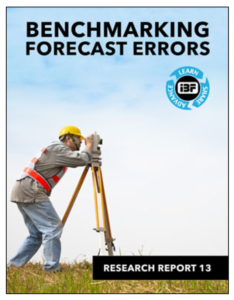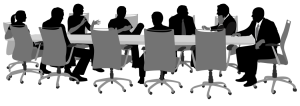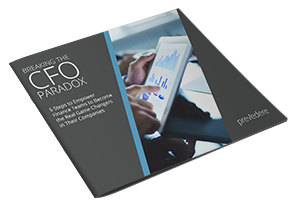Last Updated: January 29, 2021
How to create business demand forecasting success across an organization is one of the most common questions we receive. We wanted to provide some research and insights on the topic from industry leaders.
“Within demand planning and demand forecasting, there is nothing more important than forecast accuracy. The success of any plan greatly depends on it.”
–Chaman L. Jain, St. John’s University
We couldn’t agree with this statement more. Yet all too often, companies are satisfied with the status quo when it comes to business demand forecasting errors – seeing it as an inevitable burden that companies must carry. And while that may have been the case decades ago, it’s simply not true anymore. In fact, Jeff Bodenstab, vice president of marketing for supply chain planning platform ToolsGroup, visualizes the steady evolution of forecast accuracy. From simple guesswork to now leveraging technological advancements like machine learning, forecast accuracy can be improved – and significantly.
 Despite these improvements, both Jeff’s article and the Institute of Business Forecasting and Planning’s (IBF) Benchmarking Forecasting Errors report detail the difficulties businesses have in improving demand forecasting accuracy at the granular level. While aggregate forecasts in IBF’s study had an average error rate between 10.4% and 15%, those at the SKU level were between a staggering 27% to 37.7%.
Despite these improvements, both Jeff’s article and the Institute of Business Forecasting and Planning’s (IBF) Benchmarking Forecasting Errors report detail the difficulties businesses have in improving demand forecasting accuracy at the granular level. While aggregate forecasts in IBF’s study had an average error rate between 10.4% and 15%, those at the SKU level were between a staggering 27% to 37.7%.
However, it’s these granular forecasts that have the greatest business impact – ensuring that the right products are in the right place at the right time at the right price and with staffing to support these needs. When SKU-level forecasts improve, overall forecasting accuracy will naturally follow suit, helping companies maximize profits and satisfy shareholders and boards. You can read an additional CFO resource that explores how demand forecasting is executed.
So exactly how can companies improve their business demand forecasting accuracy?
 As IBF suggests, it’s important to first know how your demand forecasting efforts are currently faring – at corporate, category, SKU and geographical levels – as well as how you are doing against your industry as a whole. (See IBF’s report for specific benchmarks for Consumer Products and Food & Beverage). Only then will you be able to measure both your current opportunities and your future results.
As IBF suggests, it’s important to first know how your demand forecasting efforts are currently faring – at corporate, category, SKU and geographical levels – as well as how you are doing against your industry as a whole. (See IBF’s report for specific benchmarks for Consumer Products and Food & Beverage). Only then will you be able to measure both your current opportunities and your future results.
Then, it’s time to take a hard look at how demand forecasts are currently built. Here are a few questions to consider:
- Are you looking beyond historical performance in your forecasts?
- Is seasonality considered?
- Has any room for bias and “gut feel” been eliminated?
- Do you know which external factors – like gas prices, currency rates, consumer sentiment, real estate trends, etc. – affect your performance?
- Are you incorporating the leading indicators for your industry and business?
- Are you using the power of machine learning and predictive analytics to constantly improve your forecasting efforts?
If you answered no to any of these questions, it’s time for a change. In today’s volatile economy, historic forecast accuracy benchmarks are simply unacceptable. Contact us to learn how we’re changing the model.
 Download complimentary ‘CFO Playbook Report’, to explore demand forecasting accuracy tools >>
Download complimentary ‘CFO Playbook Report’, to explore demand forecasting accuracy tools >>